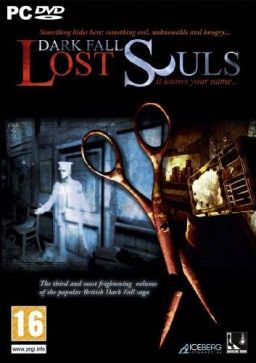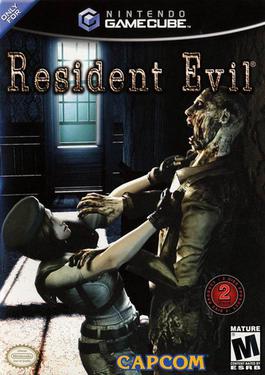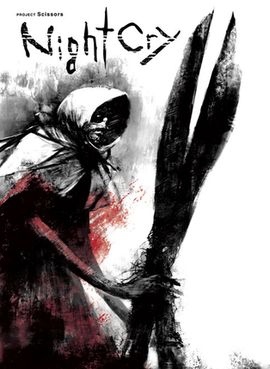Survival horror is a subgenre of horror games. Although combat can be part of the gameplay, the player is made to feel less in control than in typical action games through limited ammunition or weapons, health, speed, and vision, or through various obstructions of the player's interaction with the game mechanics. The player is also challenged to find items that unlock the path to new areas and solve puzzles to proceed in the game. Games make use of strong horror themes, such as dark mazelike environments and unexpected attacks from enemies.

Resident Evil 2 is a 1998 survival horror video game developed and published by Capcom for the PlayStation. The player controls rookie cop Leon S. Kennedy and college student Claire Redfield, who must escape Raccoon City after its citizens are transformed into zombies by a biological weapon two months after the events of the original Resident Evil. The gameplay focuses on exploration, puzzles, and combat; the main difference from its predecessor are the branching paths, with each player character having unique storylines, partners and obstacles.

Resident Evil 4 is a survival horror game by Capcom, originally released for the GameCube in 2005. Players control the special agent Leon S. Kennedy on a mission to rescue the US president's daughter, Ashley Graham, who has been kidnapped by a religious cult in rural Spain. Leon fights hordes of enemies infected by a mind-controlling parasite and reunites with the spy Ada Wong. In a departure from the fixed camera angles and slower gameplay of previous Resident Evil games, Resident Evil 4 features a dynamic camera system and action-oriented gameplay.

Resident Evil 3: Nemesis is a 1999 survival horror video game developed and published by Capcom originally for the PlayStation. It is the third game in the Resident Evil series and takes place almost concurrently with the events of Resident Evil 2. The player must control former elite agent Jill Valentine as she escapes from Raccoon City, which has been infected by a virus. The game uses the same engine as its predecessors and features 3D models over pre-rendered backgrounds with fixed camera angles. Choices through the game affect how the story unfolds and which ending is achieved.

Resident Evil is a 1996 survival horror game developed and published by Capcom for the PlayStation. It is the first game in Capcom's Resident Evil franchise. Players control Chris Redfield and Jill Valentine, members of the elite task force S.T.A.R.S., who must escape a mansion infested with zombies and other monsters.

Resident Evil Outbreak is a survival horror video game developed and published by Capcom for the PlayStation 2. It was released on December 11, 2003 in Japan, on March 30, 2004 in North America, and on September 17, 2004 in PAL regions. It was the first entry in the Resident Evil video game series to feature cooperative gameplay and online multiplayer support, although online support was not available for the PAL versions of the game.

Clock Tower is a survival horror point-and-click adventure video game series created by Hifumi Kono. The series includes four games in total. The first entry, Clock Tower (1995), was developed by Human Entertainment and released on the Super Famicom in Japan. Human Entertainment developed two more entries, Clock Tower (1996) and Clock Tower II: The Struggle Within (1998), which were released on the PlayStation and localized outside Japan. The fourth and most recent title, Clock Tower 3 (2002), was co-produced by Capcom and Sunsoft for the PlayStation 2. Gameplay in the series generally involves the player hiding and escaping from enemy pursuers without any weapons to defeat them. Scissorman is a reoccurring antagonist and sometimes the sole enemy in the game.

Clock Tower II: The Struggle Within, known in Japan as Clock Tower: Ghost Head, is a horror-themed adventure game developed by Human Entertainment and released for the PlayStation in 1998. It is the third game in the Clock Tower series. The story follows 17-year-old Alyssa Hale who occasionally is possessed by an alter ego named Mr. Bates. The player must guide Alyssa through various environments, altering between her normal and twisted personality, to uncover the secrets of her and her family's past.

Clock Tower 3 is a survival horror video game co-produced by Capcom and Sunsoft for the PlayStation 2. Released in 2002, it is the fourth installment in the Clock Tower series, and the first and only video game directed by Japanese film director Kinji Fukasaku. The plot and characters have very little relation to the previous Clock Tower games. The story follows 14-year-old Alyssa Hamilton who is part of a family lineage of female warriors who travel through time to defeat evil spirits. Alyssa travels from her time in 2003 London to the 1940s and 1960s in order to defeat these "Entities" and bring peace to troubled souls.

Clock Tower is a survival horror point-and-click adventure game developed and published by Human Entertainment for the Super Famicom in 1995. It is the first installment in the Clock Tower series. The story follows orphan Jennifer Simpson soon after she is adopted by the Barrows family along with other orphaned girls. Shortly after arriving at the Barrows family manor, one of the other children is killed by a stalker called Scissorman. Jennifer must then explore the Barrows Mansion to find a way to escape while evading Scissorman, leading to one of the game's multiple endings. Clock Tower utilizes a point and click interface with the player controlling a cursor to direct Jennifer's actions.

Infinite Space is a 2009 role-playing video game co-developed by Nude Maker and PlatinumGames for the Nintendo DS. It was published by Sega in 2009 in Japan, and 2010 in Western territories. The science fiction storyline, set across the Small and Large Magellanic Clouds, follows the life and growth of Yuri as he first confronts the aggressive expansion of the Lugovalian Empire, then a greater alien threat. Gameplay involves Yuri's fleet travelling across the galaxies, fighting in both scripted battles and random encounters, with the battle system featuring real-time commands and both ships and crew being customizable.

Dark Fall: Lost Souls is a 2009 first-person psychological horror/adventure game developed by British studio Darkling Room and published by Iceberg Interactive for Microsoft Windows. It was first released for download via Steam and Darkling Room's official website in November 2009. It was subsequently released for retail in Europe in January 2010, and in North America in April. Lost Souls is the third game in the Dark Fall series, following Dark Fall (2002) and Dark Fall II: Lights Out (2004). It tells a story relatively unrelated to either, although it is set in the same location and features several of the supporting characters from the first game.
An adventure game is a video game genre in which the player assumes the role of a protagonist in an interactive story, driven by exploration and/or puzzle-solving. The genre's focus on story allows it to draw heavily from other narrative-based media, such as literature and film, encompassing a wide variety of genres. Most adventure games are designed for a single player, since the emphasis on story and character makes multiplayer design difficult. Colossal Cave Adventure is identified by Rick Adams as the first such adventure game, first released in 1976, while other notable adventure game series include Zork, King's Quest, Monkey Island, Syberia, and Myst.

Resident Evil: Revelations is a 2012 survival horror video game developed and published by Capcom originally for the Nintendo 3DS handheld game console. Set shortly after the events of Resident Evil 4, the game follows counter-terrorism agents Jill Valentine and Chris Redfield as they try to uncover the truth behind a bioterrorist organization that plans to infect the Earth's oceans with a virus. The game features a single-player mode where the player must complete a series of episodes that involve solving puzzles and defeating enemies, and a multiplayer mode where players may fight their way through altered single-player scenarios.
Noboru Sugimura was a Japanese television and video game writer best known for his work on the Metal Hero, Super Sentai, Resident Evil, Dino Crisis, and Onimusha series.

Resident Evil is a survival horror video game developed and published by Capcom. Released for the GameCube video game console in 2002, it is a remake of the 1996 PlayStation game Resident Evil, the first installment in the Resident Evil video game series. The story takes place in 1998 near the fictional Midwestern town of Raccoon City where a series of bizarre murders have taken place. The player takes on the role of either Chris Redfield or Jill Valentine, S.T.A.R.S. officers sent in by the city and the R.P.D. to investigate the murders.

Resident Evil: Revelations 2 is an episodic survival horror video game developed and published by Capcom as part of the Resident Evil series. The game is a follow-up to Resident Evil: Revelations and Resident Evil 5. It marks the return of Claire Redfield as the protagonist, and the first time Barry Burton is a playable story character in the main series. It is also the first Resident Evil game to not feature Alyson Court as the long time voice of Claire Redfield. The first installment was released in February 2015.

NightCry is a graphic adventure survival horror video game developed by Nude Maker and published by Playism Games. NightCry is directed and written by Clock Tower series creator Hifumi Kono, and is considered a spiritual successor to the series. It was first released for Windows in March 2016, and later for the PlayStation Vita in January 2019. Ports for Android and iOS were also planned, but never released.

Athena: Awakening from the Ordinary Life is a 1999 Japanese video game developed by Yumekobo and published by SNK for the Sony PlayStation. The game stars SNK character Athena Asamiya, who is a normal Japanese high school student who suddenly learns psychic powers and thrust into a science fiction storyline. It is a three-dimensional adventure game where her psychic powers are used to solve puzzles and overcome obstacles. The game was never released outside of Japan. The game's plot was adapted into a 12-episode drama, titled Athena, in 1998.
A horror game is a video game genre centered on horror fiction and typically designed to scare the player. The term may also be used to describe tabletop games with horror fiction elements.


















